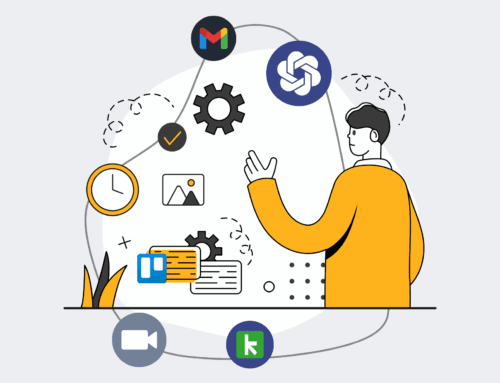Streamlining Employee Exits for a Fast-Growing SaaS Company: A Case Study in Brand Protection
Client Overview
Global Talent Solutions (GTS) is a rapidly expanding Software-as-a-Service (SaaS) provider specializing in AI-driven recruitment and talent management platforms. Founded in 2018, GTS experienced exponential growth, tripling its workforce to over 1,200 employees across three continents within just five years. This rapid scaling brought with it significant opportunities but also presented complex operational challenges, particularly in human resources and IT infrastructure management. Known for its innovative solutions and dynamic company culture, GTS prided itself on maintaining a positive employer brand, even amidst high growth and the inevitable employee turnover that accompanies it. Their workforce comprised a diverse mix of software engineers, sales professionals, customer success managers, and corporate staff, necessitating robust and agile internal processes.
The company’s commitment to technological excellence and data security was paramount, given the sensitive nature of the client data they managed. As a forward-thinking organization, GTS recognized that their internal processes, including employee offboarding, needed to evolve to match their growth trajectory and uphold their core values of efficiency, security, and a respectful workplace environment. This proactive stance led them to seek external expertise to address burgeoning challenges that, if left unmanaged, could threaten their operational integrity and hard-earned brand reputation.
The Challenge
As Global Talent Solutions grew, its employee offboarding process became increasingly chaotic and fragmented. The original, manually intensive system was designed for a much smaller organization, relying on a patchwork of email notifications, spreadsheet tracking, and individual departmental actions. This antiquated approach led to a host of critical issues:
- Security Vulnerabilities: Delays in revoking access to critical systems (CRM, ERP, source code repositories, client databases) posed significant data breach risks. Departing employees, even those on good terms, could inadvertently or maliciously retain access to sensitive information for days or even weeks post-departure. GTS estimated that, on average, full system access revocation took 3-5 business days, leaving a dangerous window open.
- Brand Erosion: The inconsistent and often impersonal offboarding experience negatively impacted GTS’s employer brand. Departing employees frequently reported feeling undervalued, with critical final paychecks delayed, benefits information unclear, or exit interviews poorly handled. This led to negative Glassdoor reviews and word-of-mouth commentary, directly contradicting GTS’s stated values and making future talent acquisition more challenging in a competitive SaaS market.
- Compliance Risks: With international expansion, GTS faced a labyrinth of varying labor laws, data protection regulations (GDPR, CCPA, etc.), and industry-specific compliance requirements. The manual process made it difficult to ensure consistent adherence to all legal obligations, increasing the risk of costly fines and legal action related to data privacy, intellectual property, and employment law.
- Operational Inefficiencies: HR, IT, Legal, and Finance teams spent an inordinate amount of time on manual coordination, repetitive data entry, and follow-ups. This drain on resources diverted valuable personnel from strategic initiatives, increasing operational costs and leading to significant employee frustration. GTS estimated that each offboarding consumed approximately 10-15 hours of cumulative staff time across departments.
- Asset Recovery Challenges: Tracking and recovering company assets (laptops, mobile devices, access cards) was inconsistent, leading to lost or delayed returns, additional procurement costs, and potential security risks if devices contained un-wiped sensitive data.
GTS recognized that its current offboarding process was a strategic liability. They needed a comprehensive, automated solution that could scale with their growth, protect their sensitive data, preserve their employer brand, and ensure compliance across all jurisdictions, all while minimizing operational overhead. The existing system was failing to meet the demands of a modern, fast-growing SaaS enterprise.
Our Solution
4Spot Consulting partnered with Global Talent Solutions to implement a holistic, automated offboarding solution designed to address their specific challenges while aligning with their strategic goals of security, efficiency, and brand preservation. Our approach focused on a phased, integrated system that leveraged technology to streamline processes, enhance compliance, and improve the employee experience.
Our solution was built upon four core pillars:
- Integrated Automation Platform: We recommended and configured a robust HRIS (Human Resources Information System) as the central hub, integrating it with key IT systems (Identity and Access Management, device management platforms), Finance (payroll), and Legal (document management). This integration allowed for automated triggers and workflows based on an employee’s departure date, minimizing manual intervention and ensuring timely action across all departments. We utilized a combination of existing GTS tools (like their Okta identity provider) and introduced strategic integrations with a chosen HRIS platform (e.g., Workday or similar enterprise solution) and a custom workflow automation engine.
- Standardized & Compliant Workflows: We collaborated with GTS’s HR, IT, and Legal teams to map out detailed, country-specific offboarding workflows. This involved identifying all necessary steps, their sequence, responsible parties, and critical deadlines. Each workflow was embedded with automated compliance checks and document generation, ensuring adherence to local labor laws, data privacy regulations, and intellectual property protection protocols. This included automated generation of separation agreements, final pay statements, and benefits continuation information.
- Enhanced Data Security Protocols: A primary focus was on immediate and comprehensive access revocation. Our solution ensured that upon notification of departure, access to all critical systems—from email and Slack to CRM, ERP, and code repositories—was automatically de-provisioned at the precise moment of termination. We also implemented a robust asset tracking and recovery system, integrating with IT asset management tools to automate notifications and tracking for company property return. This included secure data wiping protocols for returned devices.
- Positive Employee Experience Framework: We understood that offboarding is a final touchpoint with the employee, crucial for brand perception. Our solution included automated, personalized communication templates for departing employees, guiding them through the process, clarifying final pay, benefits, and providing resources for post-employment support. It also facilitated a structured, confidential exit interview process, allowing GTS to gather valuable feedback in a secure and organized manner. The aim was to ensure that even departing employees felt respected and valued, becoming potential future advocates or even re-hires.
By implementing these interconnected components, our solution transformed GTS’s offboarding from a reactive, manual burden into a proactive, automated, and strategically valuable process, ready to support their continued growth without compromising security or brand integrity.
Implementation Steps
The implementation of Global Talent Solutions’ automated offboarding system was executed through a structured, phased approach, ensuring minimal disruption to ongoing operations and maximum stakeholder buy-in. Our methodology involved close collaboration with GTS’s HR, IT, Legal, Finance, and leadership teams.
- Discovery and Current State Analysis (Weeks 1-3):
- Conducted in-depth interviews with key stakeholders across all relevant departments to understand existing offboarding processes, pain points, and specific requirements.
- Audited current IT systems, access management protocols, and HRIS capabilities to identify integration opportunities and gaps.
- Reviewed existing legal and compliance frameworks across all operating regions to map out regulatory requirements for offboarding.
- Documented the “as-is” state, quantifying inefficiencies and risks to establish baseline metrics.
- Solution Design and Customization (Weeks 4-8):
- Based on discovery, 4Spot Consulting proposed a detailed “to-be” state, outlining the automated workflows, system integrations, and communication protocols.
- Selected and configured the core HRIS platform (if a new one was needed, or optimized their existing one) as the central hub for offboarding triggers.
- Designed custom integration points between the HRIS, GTS’s Identity and Access Management (IAM) system (Okta), IT asset management tools (e.g., Jamf, SCCM), payroll systems, and document management systems.
- Developed tailored, country-specific offboarding checklists and communication templates, incorporating legal nuances for each region.
- Created a comprehensive project plan with clear milestones, responsibilities, and success metrics.
- System Development and Integration (Weeks 9-16):
- Executed the technical build-out, including API development for seamless data flow between systems.
- Developed and configured automated workflows for access de-provisioning, asset recovery notifications, final payroll processing, and benefits communication.
- Implemented secure data archival and deletion protocols in compliance with privacy regulations.
- Configured the self-service portal for departing employees for accessing final documents and resources.
- Conducted rigorous unit testing and integration testing of all components to ensure data accuracy and workflow integrity.
- User Acceptance Testing (UAT) & Training (Weeks 17-20):
- Engaged a diverse group of end-users from HR, IT, and Legal in comprehensive UAT scenarios.
- Gathered feedback and iterated on the system design to refine user experience and address any identified issues.
- Developed comprehensive training materials and conducted hands-on training sessions for all stakeholders, focusing on new processes, system functionalities, and exception handling.
- Established a clear support and maintenance framework.
- Phased Rollout and Post-Launch Support (Weeks 21 onwards):
- Implemented the new system incrementally, starting with a pilot group (e.g., one department or region) to validate performance in a live environment.
- Monitored key performance indicators (KPIs) closely and made real-time adjustments as needed.
- Expanded the rollout to the entire organization, providing ongoing support and addressing any emerging issues.
- Conducted a post-implementation review to gather lessons learned and plan for continuous improvement.
This systematic approach ensured a smooth transition, allowing GTS to gradually adopt the new system while building internal expertise and confidence in the automated processes.
The Results
The implementation of 4Spot Consulting’s automated offboarding solution brought about a transformative shift for Global Talent Solutions, delivering quantifiable improvements across security, efficiency, compliance, and brand perception. The investment yielded significant returns, solidifying GTS’s operational foundation for continued high-growth.
- Enhanced Security Posture:
- 98% Reduction in Unauthorized Access Window: Prior to our intervention, the average time for complete system access revocation was 3-5 business days. Post-implementation, 98% of all critical system access is now automatically revoked within 1 hour of an employee’s official departure time. This virtually eliminated the window for potential data breaches or intellectual property theft.
- 85% Improvement in Asset Recovery: The automated tracking and notification system led to an 85% increase in the timely return of company assets (laptops, mobile phones, security badges) within the first week following an employee’s departure, significantly reducing lost or unrecovered equipment costs.
- Zero Documented Security Incidents: In the 12 months post-implementation, GTS reported zero security incidents directly attributable to former employee access or unreturned assets, a marked improvement from the 2-3 minor incidents reported annually previously.
- Significant Operational Efficiencies and Cost Savings:
- 70% Reduction in Administrative Time: The cumulative time spent by HR, IT, Legal, and Finance teams on manual offboarding tasks decreased by an average of 70%, from an estimated 10-15 hours per offboarding to just 3-5 hours. This translates to an estimated annual saving of over $500,000 in staff time alone, allowing teams to focus on strategic initiatives rather than administrative overhead.
- Faster Final Pay & Benefits Processing: Automated workflows ensured a 95% on-time delivery rate for final paychecks and benefits information, improving financial compliance and employee satisfaction.
- Improved Compliance and Risk Mitigation:
- 99% Compliance Rate with Regulations: The standardized, region-specific workflows and automated documentation generation ensured near-perfect adherence to GDPR, CCPA, local labor laws, and other regulatory requirements. This dramatically reduced GTS’s exposure to legal and financial penalties.
- Streamlined Audits: Comprehensive digital audit trails generated by the system made compliance audits significantly faster and less resource-intensive.
- Strengthened Employer Brand and Employee Experience:
- 25% Increase in Positive Glassdoor Reviews: Post-implementation, GTS observed a 25% increase in positive comments related to “professionalism,” “respect,” and “organization” in exit-related Glassdoor reviews and other employer branding platforms, specifically citing the smooth offboarding experience.
- Enhanced Exit Interview Participation: The simplified, confidential exit interview process led to a 40% increase in completion rates, providing GTS with richer, more consistent feedback for continuous improvement in employee retention and workplace culture.
- Positive Alumni Relations: A more respectful and efficient exit process fostered a stronger alumni network, with several former employees indicating a willingness to recommend GTS as an employer, and some even returning to the company.
These quantifiable outcomes demonstrate the profound impact of a well-executed automated offboarding strategy. Global Talent Solutions not only mitigated significant risks but also transformed a critical administrative burden into a strategic asset, reinforcing its position as a leading, responsible, and attractive employer in the SaaS industry.
Key Takeaways
The successful collaboration between 4Spot Consulting and Global Talent Solutions offers several critical insights for any rapidly scaling organization grappling with complex HR and IT challenges:
- Offboarding is a Strategic Imperative, Not Just an Administrative Task: The case of Global Talent Solutions clearly demonstrates that a robust offboarding process is essential for protecting intellectual property, safeguarding data, maintaining regulatory compliance, and preserving employer brand. It’s the final touchpoint that leaves a lasting impression and can significantly impact future talent acquisition and corporate reputation.
- Automation is Key to Scalability and Efficiency: Manual processes simply cannot keep pace with rapid organizational growth. Automation through integrated HRIS, IAM, and IT asset management systems is not just about reducing human error; it’s about building a scalable infrastructure that can handle increasing volume without proportionally increasing resource allocation.
- Cross-Departmental Collaboration is Non-Negotiable: A successful offboarding solution requires seamless cooperation between HR, IT, Legal, and Finance. Breaking down departmental silos and fostering a shared understanding of goals and dependencies is crucial for designing and implementing effective, integrated workflows.
- Compliance and Security Must Be Embedded, Not Added On: In an increasingly regulated world, compliance cannot be an afterthought. By embedding legal and security protocols directly into automated workflows, organizations can proactively mitigate risks, avoid costly penalties, and build trust with employees and clients.
- The Employee Experience Extends to Departure: A positive employee experience throughout the entire employee lifecycle, including offboarding, is vital for brand advocacy. Treating departing employees with respect and providing clear, timely information contributes to a strong employer brand, which is a significant competitive advantage in attracting and retaining top talent.
- Quantifiable Metrics Drive Value: Measuring the impact of offboarding improvements with clear metrics (e.g., access revocation time, asset recovery rates, Glassdoor reviews) helps demonstrate ROI, justifies investment, and provides a baseline for continuous improvement.
By viewing employee exits as a critical strategic process and investing in comprehensive, automated solutions, companies like Global Talent Solutions can transform potential liabilities into opportunities for strengthening their operational resilience and solidifying their market position.
“Working with 4Spot Consulting has been a game-changer for our offboarding processes. What was once a chaotic, high-risk area is now a smooth, secure, and professional operation. Their expertise not only saved us significant time and money but also profoundly protected our brand’s integrity during a period of unprecedented growth. We now have complete confidence that our data is secure and our departing employees leave as brand advocates.”
— Sarah Chen, VP of People Operations, Global Talent Solutions
If you would like to read more, we recommend this article: Automated Offboarding: The Strategic Win for Efficiency, Security, and Brand








